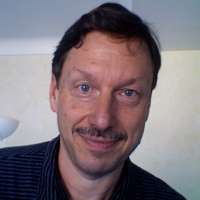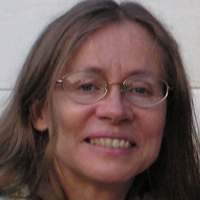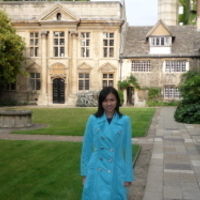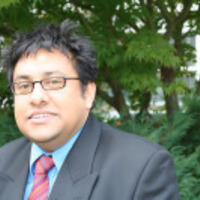
Christos Argyropoulos
I am currently seeking several PhD students to join my recently established group. If you are an exceptional candidate with an interest in electromagnetics, plasmonics, metamaterials or photonics please contact me: cargyropoulos2@unl.edu.
Previous experience in computational electromagnetic simulation codes (FDTD, FEM) or software packages (COMSOL, Lumerical, CST) is highly desired. Several fellowships exist to support your studies with funds provided by different sources.
I have received the Diploma of Electrical and Computer Engineering from the Aristotle University of Thessaloniki, Thessaloniki, Greece, in 2006, the M.Sc. degree in Communication Engineering from the University of Manchester, Manchester, U.K., in 2007 and the Ph.D. degree in Electrical Engineering at Queen Mary, University of London, U.K, in 2011.
After completing my Ph.D., I joined University of Texas, Austin working as a Postdoctoral Fellow under the supervision of Prof. Andrea Alù on analytical and computational modeling of linear and nonlinear plasmonics, thermal emitters, transformation electromagnetics and metamaterials.
Between September 2013 and August 2014, I was a Postdoctoral Associate at the Center for Metamaterials and Integrated Plasmonics at Duke University working under the supervision of Prof. David Smith on analytical, computational and experimental aspects of linear and nonlinear integrated plasmonic systems, transformation electromagnetics and metamaterials for novel imaging applications.
Since September 2014, I am an Assistant Professor at the Department of Electrical Engineering, University of Nebraska-Lincoln.
My main research interests include computational electromagnetics, integrated optics, antenna engineering, transformation electromagnetics, microwave/mm-wave/THz engineering, optical communications, metamaterials and their applications, linear and nonlinear plasmonics and nanophotonics, photonics, active metamaterials, novel optical interconnects, thermal emission from plasmonic structures, graphene nanophotonics, and novel energy harvesting devices.
Phone: +1 402 472 7200
Address: University of Nebraska-Lincoln
Department of Electrical Engineering
SEC, Room 239N, 844 N. 16th St, Lincoln, NE, 68588-0511
Previous experience in computational electromagnetic simulation codes (FDTD, FEM) or software packages (COMSOL, Lumerical, CST) is highly desired. Several fellowships exist to support your studies with funds provided by different sources.
I have received the Diploma of Electrical and Computer Engineering from the Aristotle University of Thessaloniki, Thessaloniki, Greece, in 2006, the M.Sc. degree in Communication Engineering from the University of Manchester, Manchester, U.K., in 2007 and the Ph.D. degree in Electrical Engineering at Queen Mary, University of London, U.K, in 2011.
After completing my Ph.D., I joined University of Texas, Austin working as a Postdoctoral Fellow under the supervision of Prof. Andrea Alù on analytical and computational modeling of linear and nonlinear plasmonics, thermal emitters, transformation electromagnetics and metamaterials.
Between September 2013 and August 2014, I was a Postdoctoral Associate at the Center for Metamaterials and Integrated Plasmonics at Duke University working under the supervision of Prof. David Smith on analytical, computational and experimental aspects of linear and nonlinear integrated plasmonic systems, transformation electromagnetics and metamaterials for novel imaging applications.
Since September 2014, I am an Assistant Professor at the Department of Electrical Engineering, University of Nebraska-Lincoln.
My main research interests include computational electromagnetics, integrated optics, antenna engineering, transformation electromagnetics, microwave/mm-wave/THz engineering, optical communications, metamaterials and their applications, linear and nonlinear plasmonics and nanophotonics, photonics, active metamaterials, novel optical interconnects, thermal emission from plasmonic structures, graphene nanophotonics, and novel energy harvesting devices.
Phone: +1 402 472 7200
Address: University of Nebraska-Lincoln
Department of Electrical Engineering
SEC, Room 239N, 844 N. 16th St, Lincoln, NE, 68588-0511
less
Related Authors
Morten H. Christiansen
Cornell University
James Elkins
School of the Art Institute of Chicago
Nicole Herbots
Arizona State University
Estela Blaisten-Barojas
George Mason University
Dr. Angela Amphawan
Massachusetts Institute of Technology (MIT)
Austin Coffey
South East Technological University
Sondipon Adhikari
Swansea University
Abdullah M. Asiri
King AbdulAziz University (KAU) Jeddah, Saudi Arabia
Patricia Scully
University of Galway
Tad Zawidzki
The George Washington University
InterestsView All (31)










Uploads
Books by Christos Argyropoulos
Rectenna Solar Cells discusses antenna-coupled diode solar cells, an emerging technology that has the potential to provide ultra-high efficiency, low-cost solar energy conversion. This book will provide an overview of solar rectennas, and provide thorough descriptions of the two main components: the diode, and the optical antenna. The editors discuss the science, design, modeling, and manufacturing of the antennas coupled with the diodes. The book will provide concepts to understanding the challenges, fabrication technologies, and materials required to develop rectenna structures. Written by experts in their specialized fields."
radially-dependent dispersive FDTD algorithm was proposed and applied to simulate electromagnetic cloaking structures. The proposed method can accurately model both lossless and lossy cloaks with ideal or reduced parameters. It was demonstrated that perfect ``invisibility'' from electromagnetic cloaks is only available for lossless metamaterials and within an extremely narrow frequency band. With a few modifications the method is able to simulate general media, such as concentrators and rotation coatings, which are produced by means of coordinate transformations techniques. The limitations of all these devices were thoroughly studied and explored. Finally, more useful cloaking structures were proposed, which can operate over a broad frequency spectrum.
Several ways to control and manipulate the loss in the electromagnetic cloak based on transformation electromagnetics were examined. It was found that, by utilising inherent electric and magnetic losses of metamaterials, as well as additional lossy materials, perfect wave absorption can be achieved. These new devices demonstrate super-absorptivity over a moderate wideband range, suitable both for microwave and optical applications.
Furthermore, a parallel three-dimensional dispersive FDTD method was introduced to model a plasmonic nanolens. The device has its potential in subwavelength imaging at optical frequencies. The finiteness of such a nano-device and its impact on the system dynamic behaviour was numerically exploited. Lastly, a parallel FDTD method was also used to model another interesting coordinate transformation based device, an optical black hole, which can be characterised as an omnidirectional broadband absorber.
You get in-depth coverage of state-of-the-art FDTD modeling techniques and applications for electromagnetic bandgap (EBG) structures, left-handed metamaterials (LHMs), wire medium, metamaterials for optics, and other practical metamaterials. You find steps for computing dispersion diagrams, dealing with material dispersion properties, and verifying the left-handedness. Moreover, this comprehensive volume offers guidance for handling the unique properties possessed by metamaterials, including how to define material parameters, characterize the interface of metamaterial slabs, and quantify their spatial as well as frequency dispersion characteristics. The book also presents conformal and dispersive FDTD modeling of electromagnetic cloaks, perfect lens, and plasmonic waveguides, as well as other novel antenna, microwave, and optical applications. Over 190 illustrations support key topics throughout the book.
input impedance and far field distribution. The interest of this project is the
Vivaldi antenna which is mainly used as an Ultra Wide Band (UWB) signal
system.
A method will be proposed to compute the input impedance of this antenna
system when it is simulated with the FDTD method. As an example,
the characteristic impedance of a rectangular coaxial cable will be calculated
to propose how to measure impedance in the FDTD and FD-FDTD scheme.
FD-FDTD method is appropriate to simulate media with permittivity and permeability
which are variable with the frequency of interest.
A fast and efficient method to compute the far field distribution of the Vivaldi
antenna, from the near field data, will be presented. This project, in general,
focuses on the post-process of an antenna system from known results of
the FDTD numerical simulation.
Papers by Christos Argyropoulos
Rectenna Solar Cells discusses antenna-coupled diode solar cells, an emerging technology that has the potential to provide ultra-high efficiency, low-cost solar energy conversion. This book will provide an overview of solar rectennas, and provide thorough descriptions of the two main components: the diode, and the optical antenna. The editors discuss the science, design, modeling, and manufacturing of the antennas coupled with the diodes. The book will provide concepts to understanding the challenges, fabrication technologies, and materials required to develop rectenna structures. Written by experts in their specialized fields."
radially-dependent dispersive FDTD algorithm was proposed and applied to simulate electromagnetic cloaking structures. The proposed method can accurately model both lossless and lossy cloaks with ideal or reduced parameters. It was demonstrated that perfect ``invisibility'' from electromagnetic cloaks is only available for lossless metamaterials and within an extremely narrow frequency band. With a few modifications the method is able to simulate general media, such as concentrators and rotation coatings, which are produced by means of coordinate transformations techniques. The limitations of all these devices were thoroughly studied and explored. Finally, more useful cloaking structures were proposed, which can operate over a broad frequency spectrum.
Several ways to control and manipulate the loss in the electromagnetic cloak based on transformation electromagnetics were examined. It was found that, by utilising inherent electric and magnetic losses of metamaterials, as well as additional lossy materials, perfect wave absorption can be achieved. These new devices demonstrate super-absorptivity over a moderate wideband range, suitable both for microwave and optical applications.
Furthermore, a parallel three-dimensional dispersive FDTD method was introduced to model a plasmonic nanolens. The device has its potential in subwavelength imaging at optical frequencies. The finiteness of such a nano-device and its impact on the system dynamic behaviour was numerically exploited. Lastly, a parallel FDTD method was also used to model another interesting coordinate transformation based device, an optical black hole, which can be characterised as an omnidirectional broadband absorber.
You get in-depth coverage of state-of-the-art FDTD modeling techniques and applications for electromagnetic bandgap (EBG) structures, left-handed metamaterials (LHMs), wire medium, metamaterials for optics, and other practical metamaterials. You find steps for computing dispersion diagrams, dealing with material dispersion properties, and verifying the left-handedness. Moreover, this comprehensive volume offers guidance for handling the unique properties possessed by metamaterials, including how to define material parameters, characterize the interface of metamaterial slabs, and quantify their spatial as well as frequency dispersion characteristics. The book also presents conformal and dispersive FDTD modeling of electromagnetic cloaks, perfect lens, and plasmonic waveguides, as well as other novel antenna, microwave, and optical applications. Over 190 illustrations support key topics throughout the book.
input impedance and far field distribution. The interest of this project is the
Vivaldi antenna which is mainly used as an Ultra Wide Band (UWB) signal
system.
A method will be proposed to compute the input impedance of this antenna
system when it is simulated with the FDTD method. As an example,
the characteristic impedance of a rectangular coaxial cable will be calculated
to propose how to measure impedance in the FDTD and FD-FDTD scheme.
FD-FDTD method is appropriate to simulate media with permittivity and permeability
which are variable with the frequency of interest.
A fast and efficient method to compute the far field distribution of the Vivaldi
antenna, from the near field data, will be presented. This project, in general,
focuses on the post-process of an antenna system from known results of
the FDTD numerical simulation.